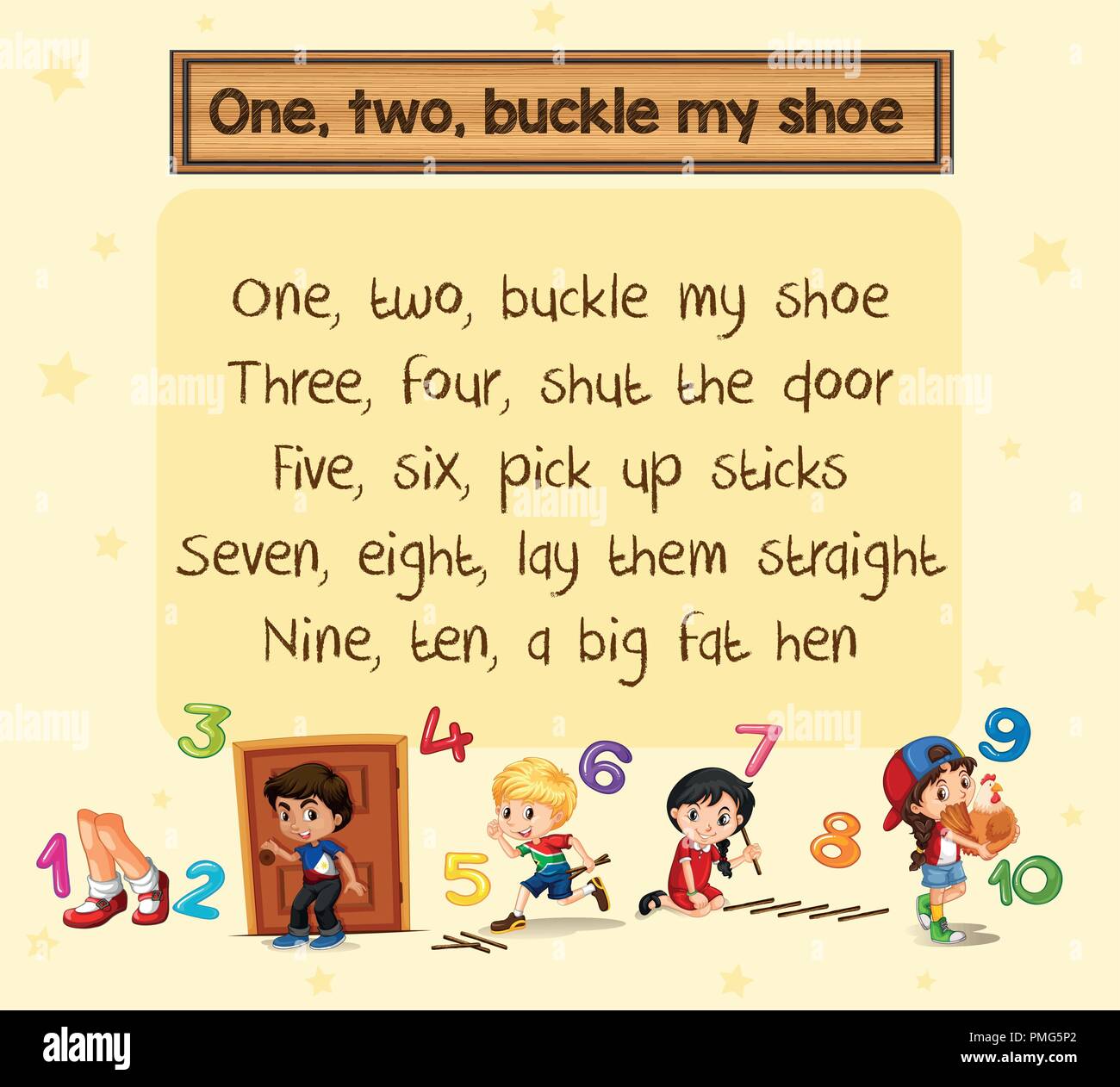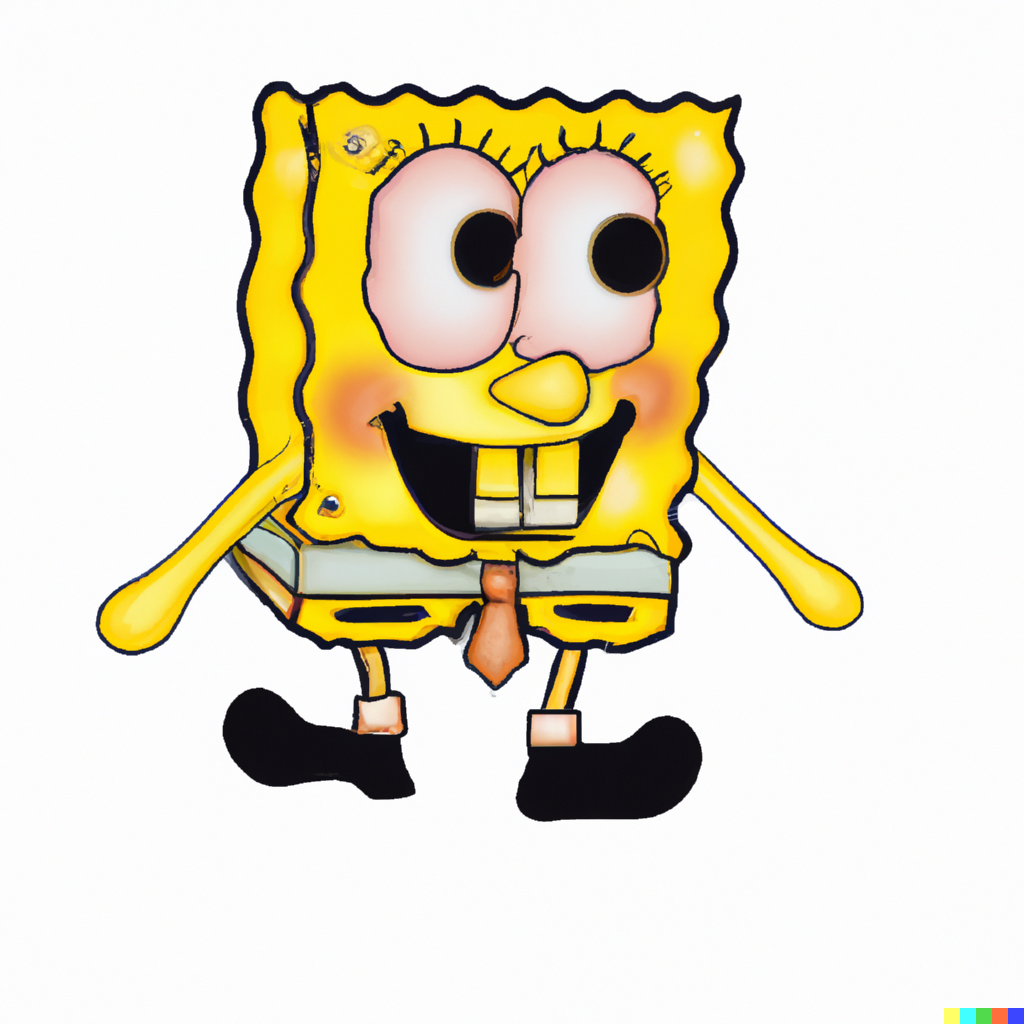Have you ever stopped to think about those little rhymes we all grew up with, the ones that just seem to stick in your head? Well, "one, two, buckle my shoe" is certainly one of them. It's a rather familiar children's verse that, in a rather straightforward way, is just what this familiar nursery rhyme is truly about, a simple counting song. It even has its own special catalog number, a folk song index number of 11284, which is pretty neat, you know?
This little tune, known as "one, two, buckle my shoe," or sometimes "1, 2 buckle my shoe," is actually a counting song that goes way back to the late 1700s in America. Apparently, folks first heard it around 1780, somewhere near Wrentham, Massachusetts, so that's a bit of history right there. Yet, the very first time it showed up in print was in London, in a book for children's songs called "Songs for the Nursery," which came out in 1805, which is quite interesting.
Over the years, "1, 2, buckle my shoe" got pretty well-known as a fun way to help young ones learn about numbers and how to follow simple directions, you know? So, we'll take a closer look at what this little piece of verse truly conveys and how it has remained a favorite through generations, even finding its way into newer forms of popular culture, too it's almost.
Table of Contents
- What's the "Buckle My Shoe Meaning" All About?
- Where Did "Buckle My Shoe" Come From?
- How Does "Buckle My Shoe" Help Kids Learn?
- Singing Along to "Buckle My Shoe"
- What Are the Words to "Buckle My Shoe"?
- Are There Different Versions of "Buckle My Shoe"?
- How Has "Buckle My Shoe" Changed Over Time?
- The "Buckle My Shoe" Trend and Online Humor
What's the "Buckle My Shoe Meaning" All About?
At its core, the meaning of "buckle my shoe" is rather simple: it's a counting exercise. This familiar rhyme is designed to help children get a grasp on numbers, from one all the way up to ten, by pairing each number with a little action or an object. It’s a playful method that has stood the test of time, making the process of learning numbers feel more like a game than a chore, you know? The rhyme, in a way, provides a structure for young minds to practice numerical order and to remember a sequence of things, which is pretty useful.
The words themselves are quite straightforward, using everyday actions and items that a child might easily picture. For instance, "buckle my shoe" refers to the act of fastening a shoe, something many children learn to do. "Open the door" brings to mind a common household activity. These connections make the abstract concept of counting feel much more real and accessible for young learners. It really shows how much fun and games matter when little kids are just starting to learn, too it's almost.
Culturally speaking, the rhyme has popped up in different forms, like other songs and even in written stories, which is pretty cool. People often look into where this well-known "one two buckle my shoe" song came from and what it means, even checking out versions that are played backward, and sometimes even a look at a specific person, which is rather interesting. So, it's not just a simple counting song; it has a deeper presence in how we pass on knowledge and play, as a matter of fact.
Where Did "Buckle My Shoe" Come From?
The origins of this counting rhyme stretch back quite a ways. This little tune, known as "one, two, buckle my shoe," or sometimes "1, 2 buckle my shoe," is actually a counting song that goes way back to the late 1700s in America. Apparently, folks first heard it around 1780, somewhere near Wrentham, Massachusetts, so that's a bit of history right there. It seems to have started as an oral tradition, passed from person to person through spoken word before it ever saw the inside of a book, you know?
Yet, the very first time it showed up in print was in London, in a book for children's songs called "Songs for the Nursery," which came out in 1805, which is quite interesting. This old tune was first written down in 1805 in London in "Songs for the Nursery," and it's one of the most well-known English songs for learning to count, which is pretty interesting. This publication helped to spread the rhyme far and wide, making it a fixture in homes and schools across different places. It's really something to think about how a simple set of words could travel so far and last so long, that is that.
The fact that it was published in a collection specifically for children shows that its purpose as an educational tool was recognized early on. This formal recording gave the rhyme a more permanent place in children's literature, ensuring its survival through generations. It’s fascinating to consider how many children over the past two centuries have learned their numbers with the help of these very words, so it's a pretty enduring piece of our collective memory, you know?
How Does "Buckle My Shoe" Help Kids Learn?
When it comes to picking up new things, what's better, really, than using some music, words, and playful rhymes? It's just so effective. "One, two, buckle my shoe" is, in a way, one of those English nursery rhymes that brings back truly nice memories of being a child and picking up new ideas. Over the years, "1, 2, buckle my shoe" got pretty well-known as a fun way to help young ones learn about numbers and how to follow simple directions, you know? It uses repetition and a rhythmic pattern, which are both very good for young brains that are just starting to process information, that.
The rhyme helps children in several key ways. Firstly, it builds early counting skills by giving a clear sequence of numbers. Each number is tied to an action, which helps children remember the order. For example, "one, two, buckle my shoe" connects the number two with the action of fastening a shoe. This connection makes the learning process more active and engaging. Secondly, it introduces basic vocabulary in a context that is easy to grasp. Words like "door," "sticks," and "hen" become part of a child's growing word bank, too it's almost.
Moreover, the rhyme encourages listening skills and the ability to follow simple instructions. As children sing along, they are practicing their auditory memory and learning to anticipate what comes next in the sequence. These little verses are really good for helping your child learn new words, which is pretty useful. It really does show how much value there is in play when it comes to early childhood learning, proving that fun can be a powerful teacher, so that's pretty clear.
Singing Along to "Buckle My Shoe"
There are many ways to sing along with this familiar rhyme, "one, two, buckle my shoe." You can find videos that have lovely pictures, offered by "The Good and The Beautiful," so that's a nice option. These visual aids can make the experience even more engaging for young learners, as they can see the actions and objects mentioned in the rhyme come to life on the screen. It really helps to solidify the connections between the words, the numbers, and the concepts they represent, you know?
Then, you can get the words on paper and read a bit about the tale behind this counting rhyme, which is pretty neat. Just click the picture to get a version of the "one, two, buckle my shoe" words that you can print out, too it's almost. Having the lyrics in hand allows children to follow along visually, which can help with early reading skills. It also provides an opportunity for parents or caregivers to discuss the meaning of each line and to answer any questions a child might have, which is quite helpful.
There's also an animated version of this well-known children's rhyme, "one, two, buckle my shoe," that includes the words on screen, which is pretty helpful. These animated versions often add a playful element with characters and colorful scenes, making the learning experience even more enjoyable. The goal is to make learning numbers and language a fun activity, rather than something that feels like schoolwork, so it's all about making it pleasant, you know?
What Are the Words to "Buckle My Shoe"?
The words to "one, two, buckle my shoe" are quite memorable and follow a clear, sequential pattern. The version you might see are often from Walter Crane's "The Buckle My Shoe Picture Book," from 1910, which is a classic, that. This particular version has become a standard for many, and it's the one most people recognize from their own childhoods. It flows nicely and is easy for children to pick up and remember, which is a big part of its lasting appeal, you know?
Here are the words to the rhyme as they often appear:
- One, two, buckle my shoe,
- Three, four, open the door,
- Five, six, pick up sticks,
- Seven, eight, lay them straight,
- Nine, ten, a good fat hen.
Each line, you see, pairs a number with a simple action or object, making it a very effective tool for teaching counting. The rhythm and the rhyming words also make it enjoyable to say and to hear, which encourages children to repeat it over and over, reinforcing the learning without it feeling like a chore, so it's quite clever, really.
Are There Different Versions of "Buckle My Shoe"?
While the core of "one, two, buckle my shoe" stays much the same, there are indeed different versions that have popped up over time. Some folks, it seems, know the "one, two, buckle my shoe" rhyme all the way up to the number 20, which is quite a bit. These longer versions expand on the original ten lines, adding more numbers and new actions or objects to continue the counting sequence. This shows how flexible and adaptable the rhyme is, allowing it to be stretched for different learning goals or just for more fun, you know?
For example, you might find versions that include lines beyond "Nine, ten, a good fat hen," continuing with eleven, twelve, and so on. These extended versions can be helpful for children who have already mastered the basic counting to ten and are ready for a bit more of a challenge. They keep the familiar structure but add new content, making the learning journey a bit longer and more involved, which is pretty good.
Sometimes, you might even come across variations where the actions or objects change slightly, even within the first ten numbers. For instance, one version might say "shut the door" instead of "open the door." This kind of slight alteration doesn't change the core purpose of the rhyme, which is counting, but it does show how oral traditions can evolve and adapt over time as they are passed from one person to another, that is that. It's interesting to see how a simple rhyme can have so many little twists and turns, apparently.
How Has "Buckle My Shoe" Changed Over Time?
Over the years, "1, 2, buckle my shoe" got pretty well-known as a fun way to help young ones learn about numbers and how to follow simple directions, you know? Culturally speaking, the rhyme has popped up in different forms, like other songs and even in written stories, which is pretty cool. This shows how it has remained relevant and adaptable across different eras and media. It's not just a dusty old rhyme; it keeps finding new ways to connect with people, which is rather impressive.
The rhyme's presence in literature and other songs demonstrates its lasting impact beyond just a simple counting tool. Authors and musicians have woven it into their works, either as a direct reference or as an inspiration, showing its deep roots in our shared cultural memory. It really does reflect the importance of play in early childhood education, proving that playful learning methods have a long shelf life, so that's a key takeaway.
More recently, this familiar rhyme has found a new life in the digital space, especially on short video platforms. It's even found its way into modern short video platforms, like a clip from vinzyylot (@vinz1765), showing its lasting appeal, you know? This digital resurgence shows that even old rhymes can become part of new trends, proving their timeless nature. The way it's used online often adds a layer of humor or satire, which is a different kind of adaptation from its original purpose, but still keeps it in the public eye, apparently.
The "Buckle My Shoe" Trend and Online Humor
The "1, 2 buckle my shoe" trend on a popular short video platform is a playful take on this well-known children's rhyme from the 1700s, that. The whole point of this trend is to poke a bit of fun at the song by drawing a funny parallel to something else, which is quite common online. It's a creative way that internet users take something familiar and give it a new, often humorous, twist. This kind of online humor shows how people interact with and transform cultural touchstones in the digital age, you know?
Apparently, the person who made the "1 2 buckle my shoe" trend, @edmondx, was tapping into a long-standing tradition of making fun of shoes in short online videos, so it's not entirely new. The idea for this kind of playful mockery was, arguably, started by someone called @slv_soundss, who is known for making fun of shoes for a living, and who also inspired a similar online trend called "in my solitude," you know? This context shows that the "buckle my shoe" trend is part of a larger internet culture of "shoe roasts" and playful critiques of footwear, which is pretty specific but rather amusing.
This modern adaptation highlights the rhyme's flexibility and its ability to be reinterpreted for different purposes, even for comedy. It demonstrates how a simple children's counting song can become a vehicle for internet memes and shared jokes, proving its enduring cultural relevance in unexpected ways. It's just another example of how a piece of our past can show up in our present, in a very different form, as a matter of fact.
So, we've taken a look at the "buckle my shoe meaning," from its beginnings as a counting song in late 18th-century America, first appearing in print in an 1805 London children's book, to its enduring role in early childhood education. We explored how its rhythmic nature and simple actions help children learn numbers and follow instructions, with various ways to sing along and even print the words. We also touched upon the different versions of the rhyme, including those that count beyond ten, and how it has adapted culturally, even becoming a humorous online trend related to "shoe roasts."
Related Resources:



Detail Author:
- Name : Rowan Nitzsche
- Username : rupert09
- Email : roberts.janis@yahoo.com
- Birthdate : 1972-07-31
- Address : 45877 Rory Pines Nicholeberg, KY 96734
- Phone : +1 (425) 825-5023
- Company : Rutherford-Kuphal
- Job : Law Clerk
- Bio : Cumque delectus fugiat excepturi numquam perspiciatis. Quia soluta minima voluptate accusantium ex eveniet atque. Illo voluptatibus provident error iste tempora.
Socials
instagram:
- url : https://instagram.com/dimitri.beer
- username : dimitri.beer
- bio : Nisi non sed velit ad soluta iste. Quasi debitis impedit omnis excepturi. Vel omnis ut laborum id.
- followers : 4994
- following : 2449
twitter:
- url : https://twitter.com/dimitri_beer
- username : dimitri_beer
- bio : Iste iure iusto aliquam quae non. Maxime eius veritatis voluptas et corporis et enim ab. Qui modi ut rerum. Hic at aperiam quos reprehenderit ut illum aut.
- followers : 5391
- following : 1410
facebook:
- url : https://facebook.com/dimitri_id
- username : dimitri_id
- bio : Hic aliquid dolor autem dicta.
- followers : 6234
- following : 1544
tiktok:
- url : https://tiktok.com/@dimitri_beer
- username : dimitri_beer
- bio : Temporibus impedit repellendus aut explicabo exercitationem unde velit.
- followers : 4039
- following : 2474
linkedin:
- url : https://linkedin.com/in/beer1972
- username : beer1972
- bio : Dicta ducimus magnam voluptas quae ex nisi.
- followers : 3874
- following : 2701